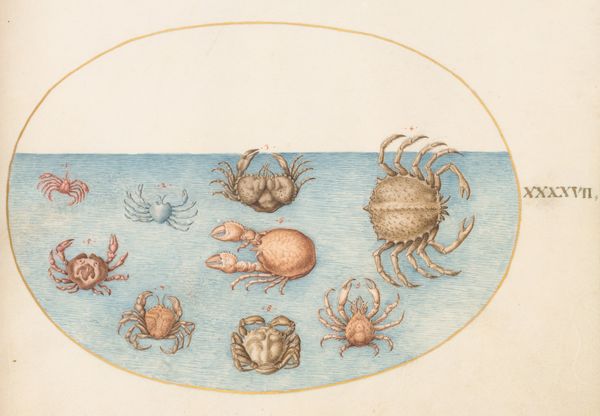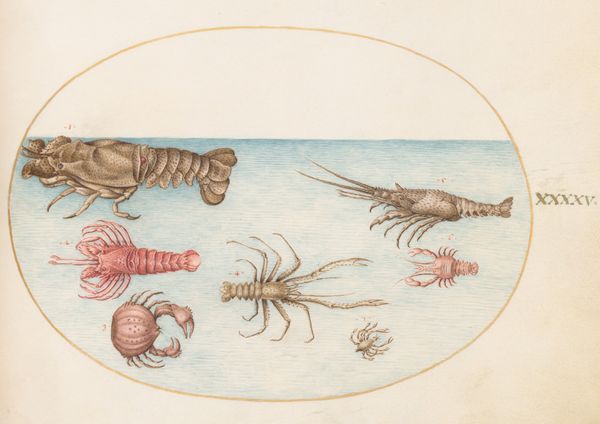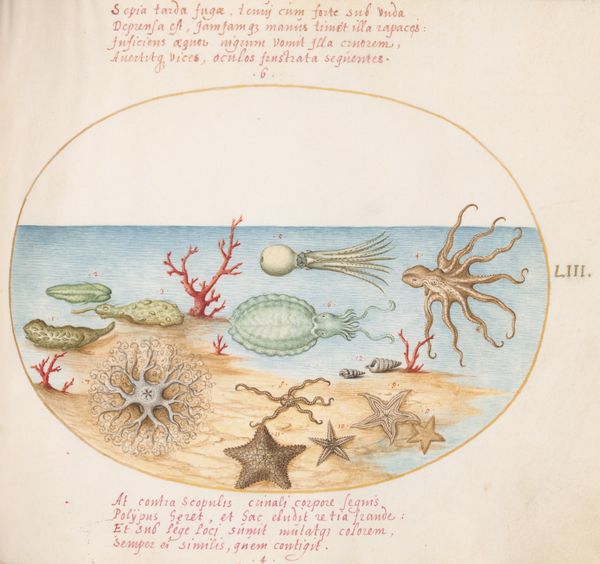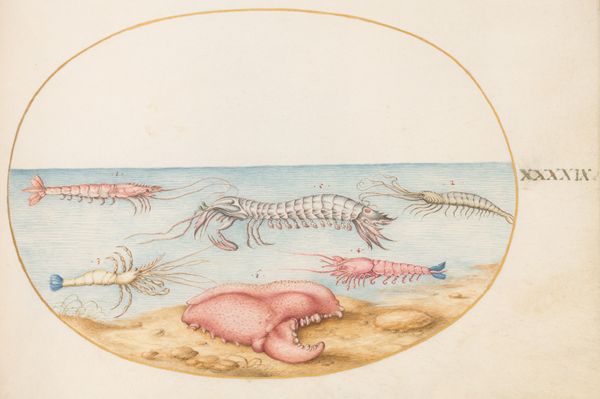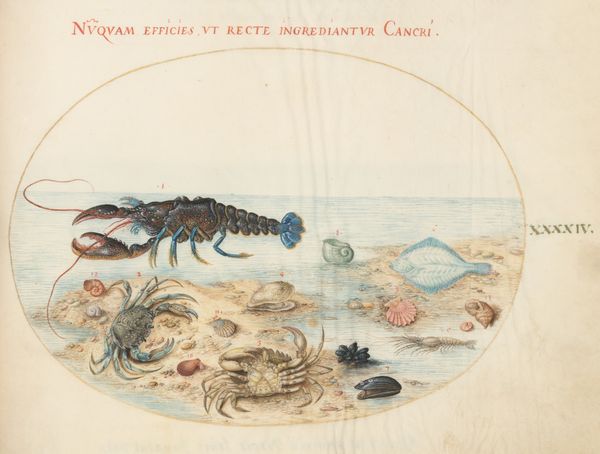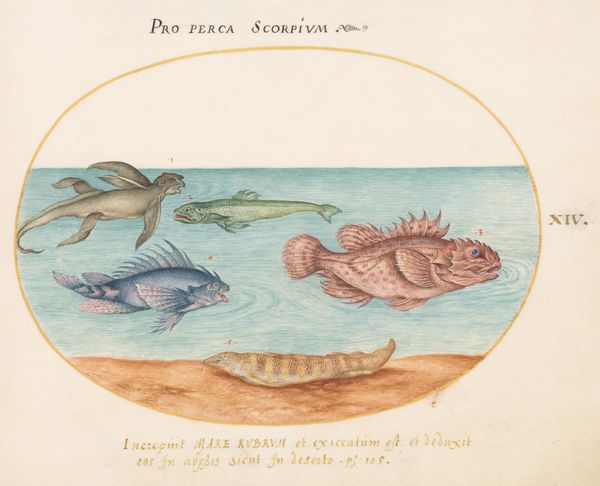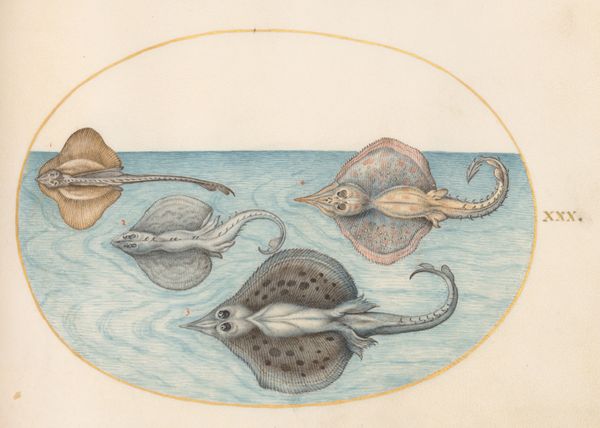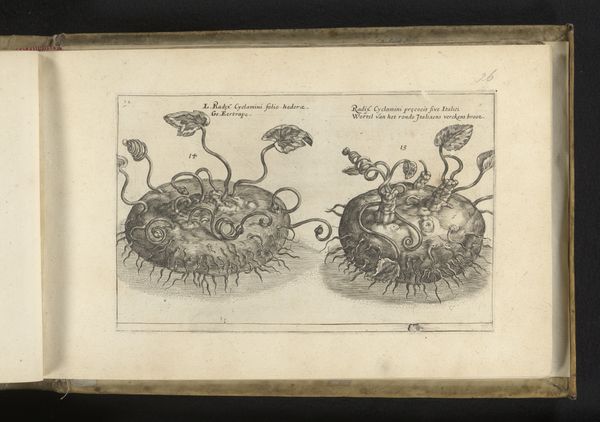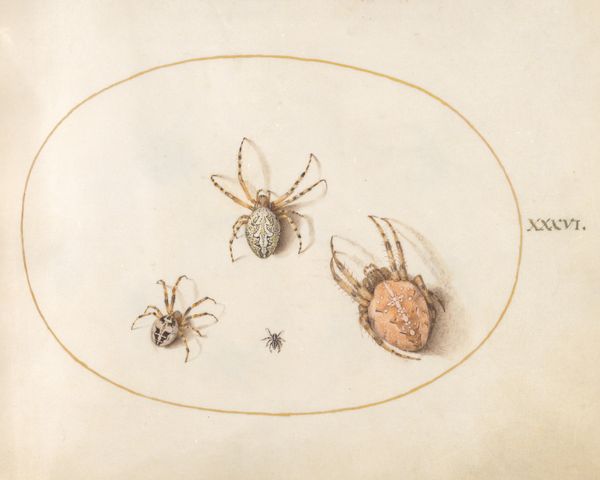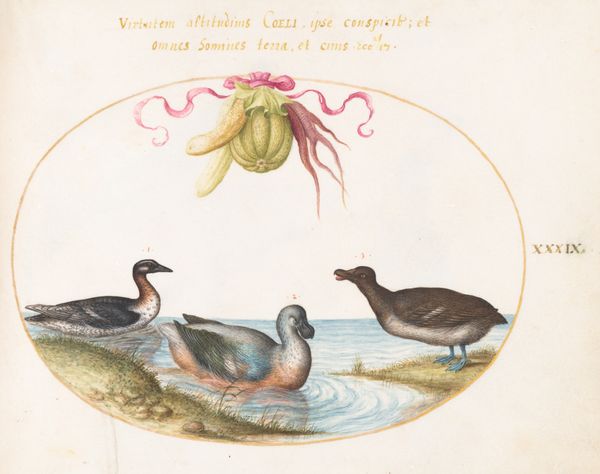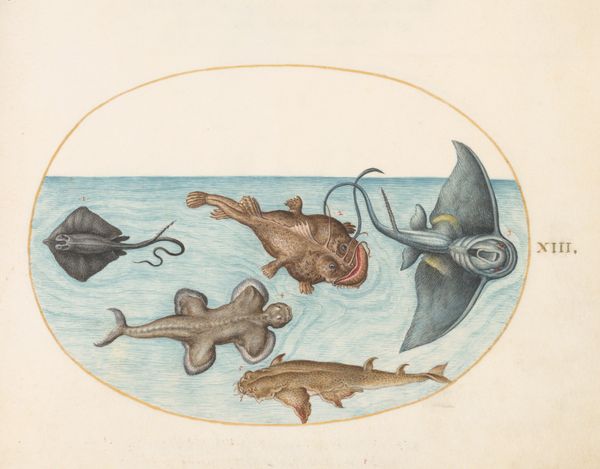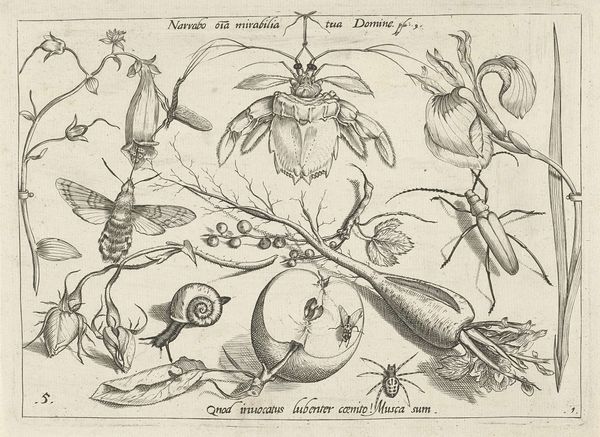
drawing, coloured-pencil, watercolor
#
drawing
#
coloured-pencil
#
water colours
#
11_renaissance
#
watercolor
#
coloured pencil
#
watercolor
Dimensions: page size (approximate): 14.3 x 18.4 cm (5 5/8 x 7 1/4 in.)
Copyright: National Gallery of Art: CC0 1.0
Curator: The Hoefnagel workshop gifted us this rendering of 'Plate 48: Ten Crabs,' created circa 1575 to 1580, using watercolor and colored pencil. I'm curious about your initial reaction. Editor: At first glance, it’s whimsical. The circular arrangement is striking, like looking into some fantastic, curated tidal pool. There's also something inherently unsettling about them, despite the bright colours. Curator: Interesting observation, unsettling in what way? Beyond a straightforward representational image, the composition evokes the era's fascination with natural history and the impulse to classify and contain the world. This impulse speaks to humanity's will to power and control over other beings and, therefore, to deep inequalities, whether we see those impulses being realised or challenged at the time it was made. Editor: Absolutely, yes, now I see it. It’s almost clinical, this display of distinct crab specimens suspended against a minimal aquatic backdrop, it evokes something more like taxonomic study. Notice how the artist uses the limited color palette to bring each crab's individual structure to the fore. Curator: Precisely. Each crab, numbered for identification, contributes to a broader picture of both scientific exploration and colonial desire. One might ponder on whose authority these creatures were depicted and for whose consumption, in a time fraught with political instability and imperial expansion, an emblem for broader debates around exploitation and dominion. Editor: Indeed, you've given me a different lens now to perceive the nuances of color and placement in the art, in which formal elements like line and color act as cultural artifacts, shaping understanding. I think about the soft rendering of shell textures. This brings a life to the depiction that undercuts its possible sinister connotations. It offers also moments of careful engagement with something other-than-human, which has to be remembered in conversations about historical exploitation and its current realities. Curator: So, viewing this, one could simultaneously appreciate artistic merit and consider broader societal and power structures... Food for thought! Editor: Truly. It gives you something tangible to focus on within all that historical analysis.
Comments
No comments
Be the first to comment and join the conversation on the ultimate creative platform.
